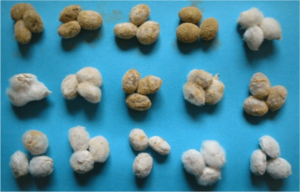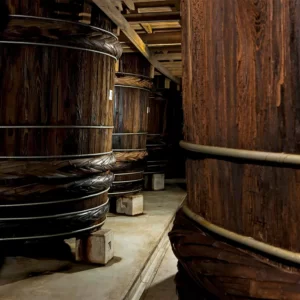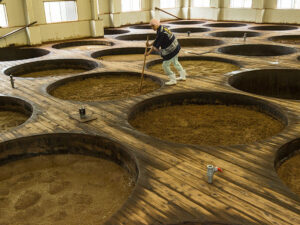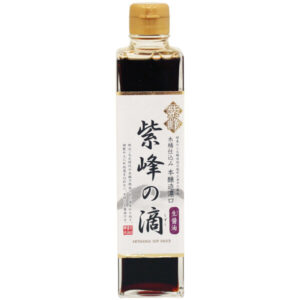Soy sauce is a beloved condiment that adds depth and umami to countless dishes. While everyday soy sauce offers familiar flavors, there is a lesser-known gem that takes this ancient ingredient to new heights: barrel aged soy sauce. Crafted through a meticulous and time-honored process, barrel aged soy sauce offers a complexity and depth of flavor that sets it apart. In this blog, we uncover the artistry behind making barrel aged soy sauce and how it elevates your culinary experience.
Selection of Ingredients

The journey of creating barrel aged soy sauce begins with selecting the finest quality ingredients. Typically, soybeans and wheat are the main components. Artisanal producers often prioritize using locally sourced, non-GMO soybeans and premium wheat to ensure the highest quality and flavor.
Koji Fermentation

Koji, a crucial element in the process, is made by inoculating steamed grains with a mold called Aspergillus oryzae. This mold breaks down the starches in the grains into simple sugars, which are essential for the fermentation process. The koji is carefully cultivated and monitored to achieve optimal enzymatic activity.
Mash Preparation

The prepared koji is combined with soybeans and wheat to create a mash. The ratios may vary depending on the desired flavor profile. The mash is then mixed and left to ferment, allowing the enzymes from the koji to convert the starches into sugars.
Fermentation and Aging

The mash is transferred to wooden barrels, traditionally made from cedar or oak, which play a crucial role in the aging process. The barrels allow the flavors to develop and mellow over time. During fermentation, naturally occurring yeast and bacteria contribute to the transformation of the sugars into alcohol and organic acids.
Time and Patience

Unlike mass-produced soy sauce, barrel aged soy sauce is characterized by an extended aging period. The duration can range from several months to years, with some premium varieties aged for a decade or more. This extended aging allows the complex flavors to develop, resulting in a rich, nuanced, and well-rounded taste.
Meticulous Monitoring

Throughout the aging process, skilled artisans closely monitor and manage the barrels. They periodically check the flavor progression, adjust temperature and humidity levels, and even rotate the barrels to ensure consistent and optimal conditions. This attention to detail is essential for achieving the desired flavor profile.
Final Extraction and Bottling

After the aging period, the soy sauce is carefully extracted from the barrels. It undergoes filtration to remove any impurities while preserving its distinct flavors. The final product is then bottled, often in elegant and artisanal packaging, ready to be savored and enjoyed.
The art of making barrel aged soy sauce is a testament to the meticulous craftsmanship and dedication of skilled artisans. The result is a condiment that transcends the ordinary, offering depth, complexity, and a symphony of flavors. Whether drizzled over sushi, added to marinades, or used as a finishing touch to your favorite dishes, barrel aged soy sauce adds a level of sophistication that truly enhances the culinary experience.
So, the next time you reach for soy sauce, consider exploring the world of barrel aged soy sauce. Allow its rich history and artisanal production process to delight your taste buds and elevate your culinary creations.




















